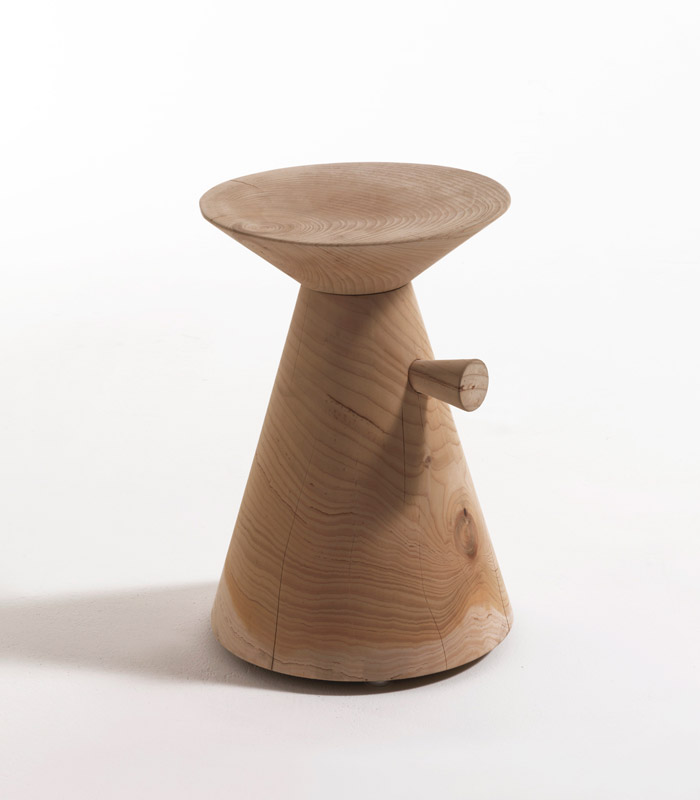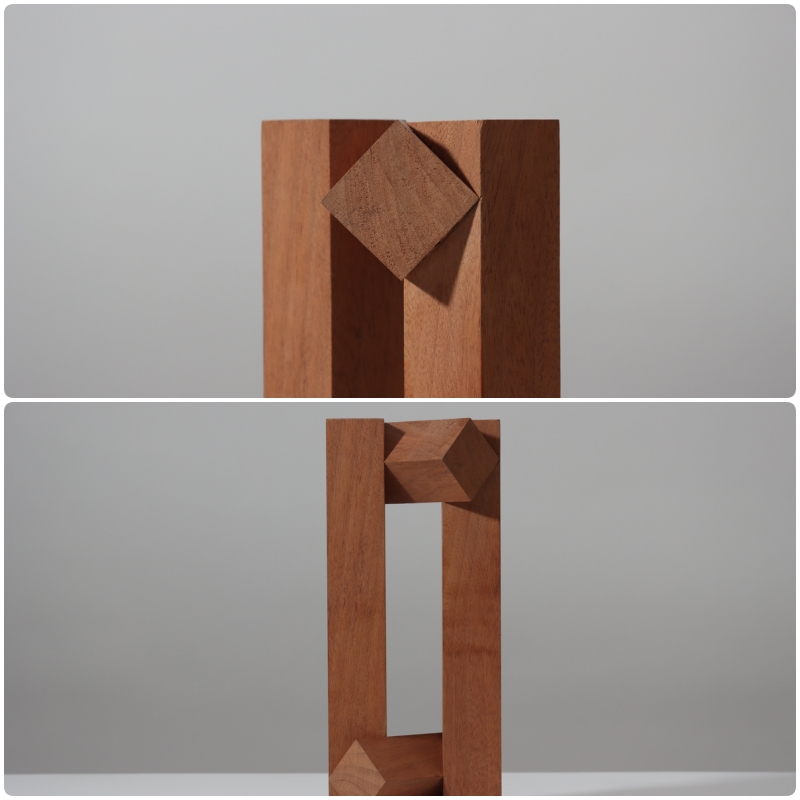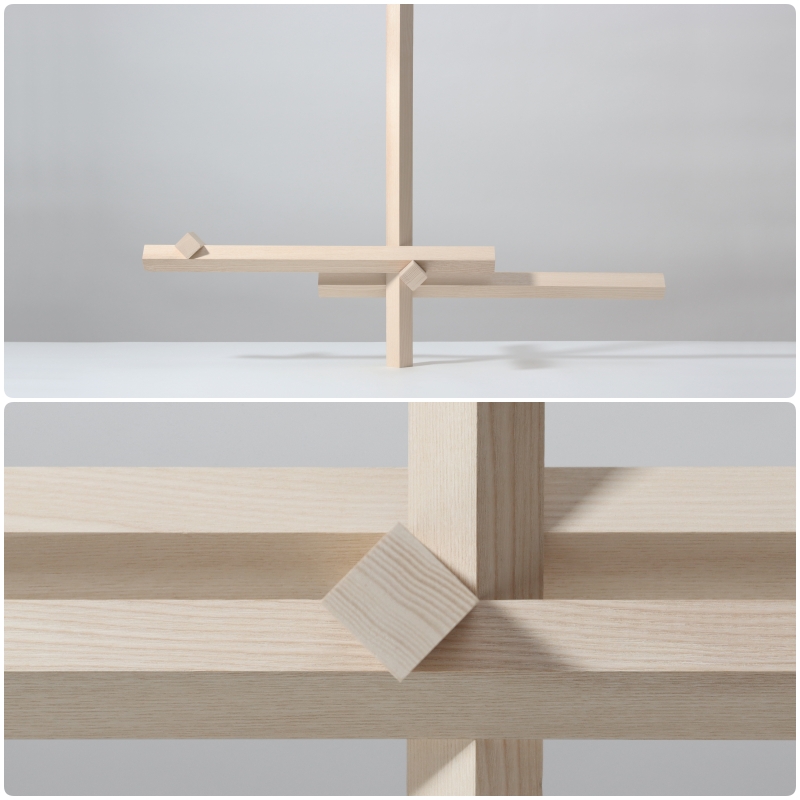The Sacred Process of Design
David Dolcini works intimately with wood, in a process that is as bound by tradition as it is through research, technology and revered practice. Coming from a family with a long tradition in craftsmanship and production, Dolcini is known for classics such as the ingenious Pinocchio for Riva1920. This year at the Milan Design Week 2023, the Salone del Mobilo Milano 2023, he returns with his time-nurtured pieces for Arflex and Porada. By Sindhu Nair
David Dolcini represents design at its finest; handmade, with a traditional approach that values time as an investment on designs. His process is in the ideation and making, in the touch and feel of wood, a sort of personal relationship with the material, that is nurtured over time and given utmost respect and care. A sacred relationship with the material he works on which is mostly wood.

Design is a method, a process of research and analysis that ends in a synthesis creative step, for Dolcini
Dolcini entered the world of design as a project manager for Luceplan and later worked in Shanghai for A00-Architecture. In 2007 he founded his own eponymous brand, which deals mainly with product and industrial design, interior design, installations and art direction. The studio has collaborated with companies such as Luceplan, Porada, Bric’s, Panasonic, Riva1920, Politecnico di Milano,and IED.
Dolcini’s design approach is characterised by direct technical insight in each project, knowledge of materials and production technologies, combined with transversal research: from art to architecture, from craftsmanship to industrial design.
SCALE: Tell us about your design journey. How did your work in Shanghai help you in deciding to open your own firm?
DOLCINI: In 2006, Shanghai was bustling, and, as an extremely curious person, it was an endless source of inspiration for me. That’s when I became passionate about Chinese fine arts (particularly those related to the Song and Tang dynasties). The speed and vitality with which I saw projects being born and developed in Shanghai only fuelled my desire to become a designer. Life then did the rest: I returned to Italy for Christmas and found my mother seriously ill, so I chose to work freelance. This allowed me to care for her during the day and work in the evening.

PINOCCHIO for Riva 1920, Made in 2010. “Born from a solid block; our little boy made of wood. Iconic, strong, and ironic, with a unique personality,” introduces Dolcini.
SCALE: The most important project that opened your mind and studio to fame and recognition.
DOLCINI: The project that first gave me great visibility at an international level, as well as being one of my most important projects, is undoubtedly the ARGO modular sofa for Porada, presented in 2018. Although, perhaps the project that first established me as a designer was probably Pinocchio for Riva1920 in 2010. It’s an iconic project that I am very fond of and that, perhaps also because of its history and name had made a strong impact. Up until a few years ago, I still encountered people who asked me: “Are you the Pinocchio guy?!” I would smile and reply, “No, that’s Collodi!” Coincidentally, both products are made of wood.
SCALE: How do you decide on collaborations, and what makes them a success?

The opening of an operative base also in Spain and the collaboration with clients from all over the world enrich the studio of an international vision.
DOLCINI: I am convinced that in the collaboration between designer and company, just like in any human relationship, there must be a strong affinity and shared values. In my experience, the best results come from a solid relationship based on mutual trust and respect. I carefully select my clients because I believe that what we do reflects who we are. I look for certain values in them that are actually my own and dedicate a lot of time and energy to building relationships with clients. My choice is always oriented toward quality rather than quantity. 
SCALE: Most of your work is a celebration of handmade with wood joints in carpentry. Is that a conscious effort or do you enjoy working with wood as a material?

TIMEMADE is the experience of a slow step in design, the need for a certain carefreeness that can only be gained by practicing the pathways of materials.
 DOLCINI: Wood has been part of my family’s history for over a century, and it is inevitably a part of me. I still remember when my father sent me to work in a sawmill during summer so that I could learn the value of work and money—I am still very grateful to him today. For me, it is almost natural to approach wood as a project material, and at the same time, it gives me great satisfaction to work with it.
DOLCINI: Wood has been part of my family’s history for over a century, and it is inevitably a part of me. I still remember when my father sent me to work in a sawmill during summer so that I could learn the value of work and money—I am still very grateful to him today. For me, it is almost natural to approach wood as a project material, and at the same time, it gives me great satisfaction to work with it.
SCALE: How do you approach a design, is it first through drawings and then moving on to prototype and then finally how different is the final product from the vision? 

DOLCINI: Over the years, I have developed a design methodology that we, as a studio, now apply to every project in an almost natural way. It always begins with deep and cross-disciplinary research, which allows us to permeate our projects with a solid cultural foundation. This is followed by a phase of analysis and sketches, and then development. Prototyping, often carried out only for parts of the project, is a moment to verify the most critical aspects of each project. Every product is always different from its original idea because design work involves not only the studio but also the company, suppliers, and craftsmen, so it is inevitable that each person’s contribution leaves a mark—almost always for the better. Design is teamwork.
All Images Courtesy David Dolcini.






